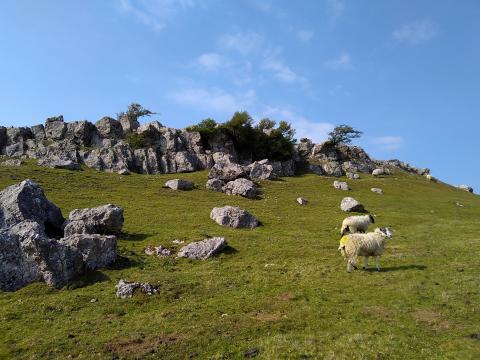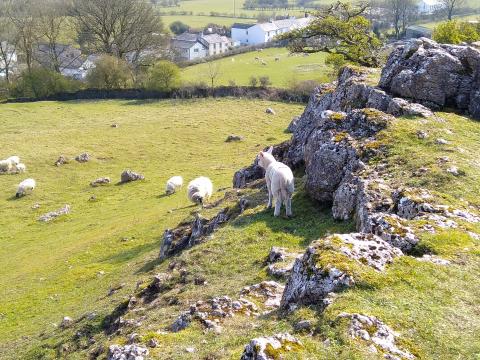Pardshaw Crag

At Pardshaw Crag in Cumbria, George Fox preached back in 1650. His Sedbergh outdoor pulpit is better known, but these rocks also heard his thunderous remonstration. One such as I, holding to conservative theology, might be considered unusual for admiring Fox, whose modern followers’ theology is so broad it can barely be defined. A large chasm often develops between a movement’s founders and their later followers, who would not necessarily recognise each other. John Wesley would not endorse many of the current people called Methodist, and Peter of Capernaum would not appreciate the papal leviathan which claims him as founder.
Be that as it may, Pardshaw Crag struck me as a fine place to worship God and hear gospel preaching. The dramatic landscapes cause one to contemplate the mighty, creative genius of El-Shaddai. A number of churches have been meeting outdoors lately; it was something we briefly considered. There were also practical benefits for meeting in so wild a place in the seventeenth century. As Thomas Denton rather unsympathetically explained:
"They dwell far distant from any church, and having high-crags or clinty rocks above the town, they have their great Quaking meetings there, from whence they do readily espye any who come to disturb their conventicles; and so they were wont to disperse before they were caught, to prevent their convictions; their ignorance & sloathe (sic) having easily suffered them to be seduced & yield to the delutions (sic) of their crafty speakers." A Perambulation of Cumberland (1687-88)
Many Christians I know could barely be troubled to join a Zoom meeting in the late lockdown, much less climb a steep crag that worship might be joined. Persecution does- and will- separate chaff from wheat, sheep from goat, the corpse from the regenerate.

- Log in to post comments


 Sunday Worship 10.45am & 6.00pm
Sunday Worship 10.45am & 6.00pm